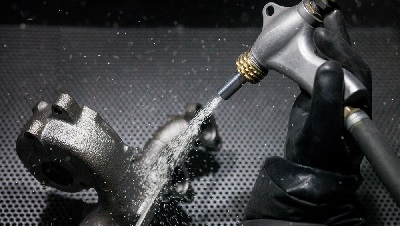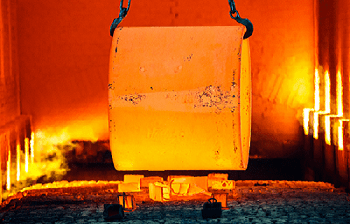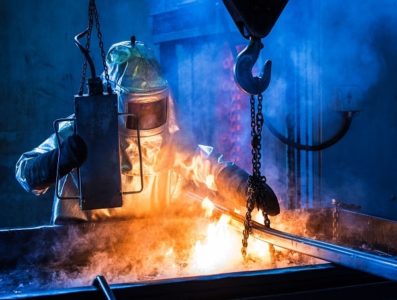Finishing
Metal Finishing and Surface Treatments
NovaCast routinely provides a wide range of metal finishing and surface treatments to its cast products in order to enhance their mechanical or aesthetic properties.
Once the component surface preparation, usually in the form of fettling, linishing and shot blasting is complete, surface treatments and finishes are applied and these can include heat treatment, anodising, plating, Alocroming, painting, powder-coating or lacquering.

Fettling & Linishing
These are the first processes usually performed on raw sand and die-cast components. Fettling removes the risers and excess material while linishing is the process of grinding or sanding the surface to remove surface irregularities.
Shot Blasting & Peening
Shot blasting is used to create a uniform surface finish by removing surface burrs or debris remaining from the casting process.
Shot peening is a similar but less aggressive process where finer particles are blasted at the surface thus avoiding the risk of surface cracking in some alloys. These processes provide an excellent key for further surface finishes.

Painting & Powder Coating
Castings can be finished according to customer specification, with wet painting and powder coating being the most common. The choice depending on whether aesthetics or durability and resistance to abrasion is the primary objective.
Surface Treatments
NovaCast can provide any form of surface treatment required including sulphuric or chromic anodising, for enhanced durability and corrosion resistance. Alocrom, which is a chromate conversion coating, can be used where a less durable surface finish is required.
Heat Treatment

Castings can be subjected to various heat treatment techniques that can be used to harden them, change the properties of the alloy or remove internal stresses. NovaCast is able to advise on the options and deliver castings that are optimised for their operating environment.
HIPing
The HIP process uses elevated heat and gas pressure to densify metals and eliminate internal microporosity through plastic deformation and diffusion bonding. The process involves the placement of castings into a pressurised, enclosed, high temperature furnace for a prescribed length of time. Within the furnace, inert gas (typically argon) is used to exert uniform isostatic pressure on the castings. Find out more on the HIP Treatment page.
To discuss your requirements, call a member of NovaCast’s team on +44 (0) 1225 707466, send us a message here or email sales@novacast.co.uk.